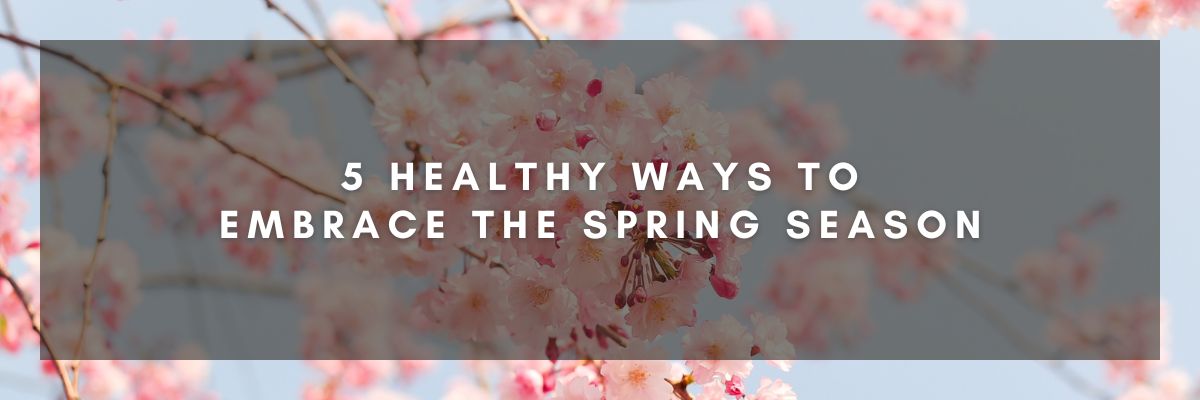- Absolute Acupuncture & Stress Relief3205 Southgate Circle
STE #7
Sarasota, FL 34237941-500-2767 - Mon - Fri9am - 5pmSat8am - 3pm
-
Latest Articles:
- • Energy-Saving and Safety Tips for Winter Proofing Your Home •
- • Winter Wellness: Mental Health Tips for Beating the Winter Blues •
- • 10 Cozy Winter Activities to Enjoy Indoors •
Health WellNews
A Guide to Summer Self-Care

As those vibrant summer sunsets paint the sky and the longer days and warmer temperatures beckon us outside to spend more time with friends and family, it’s easy to picture relaxing days filled with laughter and fun. Yet, for many people, this warmer season can lead some to struggle with their mental health. Despite this idyllic time for many, others can find themselves overwhelmed by stress and anxiety, struggling to maintain a sense of equilibrium.
And this isn’t an uncommon scenario. While summer can offer a reprieve from our routine and often mundane winter habits and schedules, it can also pose mental health challenges. But, if we arm ourselves with the right strategies, we can cultivate a season of resilience and thrive in the bright summer sun.
According to recent studies conducted by the leading mental health organizations such as the National Institute of Mental Health (NIMH) and the World Health Organization (WHO), the summer season can impact mental wellbeing in a variety of ways. Research indicates a notable increase in mood disorders during summer months. These disorders are attributed to factors such as heightened expectations, disrupted routines, and the prevalence of increased social events. Additionally, the rise in temperature can exacerbate symptoms of anxiety and depression for some, thus underscoring the importance of proactive self-care strategies.
Prioritizing mental health becomes paramount. Let’s look at some evidence-based tips to help nurture wellbeing and savor the joy that summer brings.
One of the first things we can do in these warmer months is to embrace nature and spend time outdoors, enjoying your surroundings whether you are surrounded by lush greenery or turquoise waters. Research suggests that exposure to sunlight and nature can boost your mood and reduce stress levels.
As you are out enjoying nature, stay active by engaging in regular physical activity, whether it’s a leisurely stroll after dinner or an invigorating hike in the mountains and foothills. Exercise releases endorphins, the body’s natural mood elevators, promoting feelings of happiness.
Incorporate mindfulness techniques into your daily routine to help cultivate inner peace and resilience. It might be through regular meditation, deep breathing exercises, or walking, but it can help alleviate stress and enhance overall mental clarity.
Stay connected with loved ones and friends and make sure to foster meaningful relationships in your life. Summer provides ample opportunities to maintain social connections through various types of gatherings which serve as invaluable sources of support and camaraderie.
And perhaps most importantly, prioritize your self-care. Set aside time for activities that rejuvenate your mind, body, and spirit. Whether it’s indulging in a soothing bubble bath, enjoying a glass of wine after dinner, reading a good book or pursuing your favorite hobby, prioritize activities that bring you joy as well as relaxation.
Nurturing our mental well-being is a journey of self-discovery and resilience. By implementing these strategies and fostering a compassionate self-attitude, we can navigate the summer with grace. As you plan your summer vacation and other adventures with friends and family, how will you prioritize your mental health as well?
Spring Clean Your Way to Better Health

With warm temperatures starting to become more common, it’s time to open the windows and doors and let the fresh air and fresh start into your home. Spring is a great time to “Marie Kondo” your closets and drawers and decide what brings you joy and can stay, and what needs to be put in the donation box.
Spring cleaning is a bit of a right of passage each year, just like setting those New Year’s resolutions. The Spring season is known as a time of rebirth and renewal and as the days get longer and lighter, it really is an ideal time to renew your living space. But, did you know that Spring cleaning can not only be good for organizing your house, but it can lift your mood as well.
One of the main benefits of Spring cleaning is that it gives you a feeling of accomplishment, to finish a task you have started. Our brains feel good when we can check this off the list which can then reduce tension and stress since the task is no longer hanging over your head. Not to mention the fact that you can see and feel how good a space feels to you once it has been cleaned and/or organized.
According to the Cleveland Clinic, Spring cleaning can also be a form of therapy that helps you reduce stress. There are some people who find that cleaning can help them organize their thoughts and reduce the feeling of being overwhelmed. It can restore a sense of control and help you organize your thoughts as you organize and clean your space!
And just think about the peaceful feeling that comes when you can sit back, relax and admire a clean and aesthetically pleasing space. If your bedroom is a hot mess, it is literally the first and last thing you look at when you wake up and fall asleep. Think about how much better you will feel waking up and going to bed when you have a peaceful and clean space to start and end your day in
Another way that Spring cleaning can improve your mental health is that it can actually improve your focus. And if you suffer from ADHD, then you know you already have issues with trying to stay focused so keeping your space clean and organized is going to keep you free of unnecessary distractions. And we all know how important this is now that so many people work from home. The last thing you want to be doing is hiding those dirty dishes on your desk before your morning Zoom call.
A physical benefit to Spring cleaning is the fact that it gets you moving. Cleaning your windows or vacuuming a large space can help you break a sweat and get some endorphins pumping. While cleaning your house isn’t a substitute for exercise, it is still great for your body to get up and move and might help you hit your daily step goal!
So, quit procrastinating and get that Spring cleaning list started! Choose just one area at a time, make a plan for one room at a time and get moving. Give yourself some grace as you won’t finish everything at once, but stick to the plan, finish one room at a time, and in no time your space will be organized, and you will feel so much better.
5 Healthy Ways to Embrace the Spring Season

Before the sweltering temps of summer arrive, it’s time to enjoy the renewal of Spring and all the beauty that it brings. Spring is a great time to shake off the cold and dreariness of Winter and embrace the beauty and warmth that can nourish us from the inside out.
While Spring brings a bounty of fresh fruits and veggies (which we all should be taking full advantage of), there might be a few gaps in your nutrition and diet routine. Make sure you also load up on helpful supplements like Vitamin C, probiotics for gut health and Omega 3 fatty acids.
And now that warmer temperatures are around the corner, it’s time to look at some outdoor cardio and other fitness activities so you can get out in the fresh air and sunshine. Now that it’s lighter later, add in a longer evening or morning walk, organize after dinner bike rides with your kids, or walk with a neighborhood group to get some social time in while you move.
For some, one of the down sides to Spring is the allergies it can bring. And Spring cleaning just might push some over the edge of the allergen cliff. Think about investing in quality air purifiers with an HEPA filter to reduce allergens and improve your indoor air quality. It’s important to make your home a haven from allergies if this is an issue for you.
For your mental well-being, consider starting a daily meditation practice to help calm your mind, reduce stress, and increase self-awareness. Just 15 minutes a day can make a huge impact on your mental and emotional well-being. You also might try starting a gratitude journal to help you reflect on at least three things you are grateful for each day to foster a more positive mindset.
As the temperatures rise, your skin might require a bit more attention. Skin health experts advise exfoliating regularly with a gentle cleanser to keep your skin radiant and smooth. You also might want to switch to a lighter moisturizer to provide hydration but keep your skin feeling light. And don’t forget to finish with sunscreen for an extra layer of protection!
With these five tips at the top of your mind, you will be ready to embrace all that Spring has to offer with a healthy mindset, improving your physical health and enjoying the great outdoors once again with family and friends. Beauty begins from the inside out so focusing on all the aspects of your health and well-being (physical, emotional, mental) will help you put your best foot forward and spring into a new and improved you!
Fun Things to do this Spring

The dawn of Spring is a glorious time of year as the air is warmer and the days are longer. Fresh food and fresh flowers are all around us and now that it’s more comfortable to be outside again, there are several fun activities to enjoy both indoors and outdoors this Spring. Which one(s) will you and your family enjoy?
If you really sit down and think about it, your Spring activity list could include just about any adventure you can think of. Here’s an initial batch of ideas if you absolutely can’t wait to get back outdoors. If you live in the right part of the country, go see the cherry blossoms! It really is a remarkable site so if you can do this you definitely should. It’s also the perfect time to:
- Plant a Spring garden.
- Have a picnic at the park.
- Join that hiking club you’ve been thinking about since last year.
- Join a running club or a softball league.
- Join the craze and hit the pickle ball court.
- Take up golf (or mini golf if that’s more your speed).
While not an exhaustive list, the one above can get you started. Here’s another list of ideas for some Spring activities if you have kids…or even if you are simply a kid at heart.
- Go fly a kite (for real, not just an expression).
- Find a playground and play on the swings or the merry go round.
- Feed the ducks at the local pond.
- Wade in a creek and climb a tree.
- Blow bubbles.
- Draw pictures on the sidewalk with colored chalk.
Now that we have a few activities to consider, what to eat is also a big topic come Spring. The possibilities for fresh fruits and vegetables are amazing at this time of year. Enjoy some roasted asparagus, artichokes, new potatoes, spinach, sugar snap peas, and carrots. It’s also the perfect time of year for fresh strawberries and apricots. If you live on the East Coast, it’s also soft-shell crab season. And, with Easter around the corner, don’t forget to enjoy jellybeans and Peeps!
And there are just some activities that we can really appreciate more in the Spring after a long and harsh winter. For example, open the windows and let the fresh, clean air in and listen to the rain on a Saturday morning. Look for rainbows and head outside in your bare feet to enjoy the sun on your face. Decorate your house with fresh flowers and break out the Spring wardrobe of vibrant colors and open toed shoes!
The cold and dark days of winter are behind us, and the bright days of Spring are here. Get off the couch and get back outside; it’s great for your mental and physical health. Spring is a beautiful time of year when the earth wakes up from its winter slumber. Get outside and enjoy all this glorious season has to offer…before it’s too hot to be outside!
5 Ways to Stay Fit This Winter

As the weather worsens and the colder months are upon us, it’s important to make sure we don’t continue the overindulgence of the holidays. While there is nothing better than comfort food when it’s cold outside, we can’t let that lead to gaining winter weight and letting our health slide. With just a little planning and some accountability, you can maintain your fitness (and maybe even improve it!) this winter. Just follow these five tips to get you going in the right direction.
Challenge Yourself
There are fitness apps galore with any number of winter fitness challenges (some free) you can sign up for, no matter what your fitness level. These challenges give you a sense of accountability and accomplishment as you stick with it for 30 days to reach a predetermined goal. Whatever your interest (walking, swimming, squats, lunges, etc.) you can find something of interest to keep motivated. And better yet, grab a friend or two to join in. Making it a social occasion means you are more likely to stick with it and the extra accountability helps, too!
Get Outside
Even with the colder temps, it’s important to get some outside exercise time, even if it’s just a simple walk in the neighborhood. If you developed a habit of taking an evening walk in the summer, you might need to adjust that as the days are shorter and it might be too cold at night. Outside exercise helps you get fresh air and exposure to natural light which helps to regulate your circadian rhythm.
Track Your Steps
If the kids were out of school and your family took some time off your normal routine, it can sometimes be difficult to get back on track. An easy way to get yourself going again is to track your activity levels. Most cell phones and smart watches and fitness bands can help track everything from your steps to flights of stairs, to miles walked/biked/swam, to your sleeping habits. Tracking your activity level can help you be more conscious of how much physical movement you are doing during the day and keep you on track to make sure you are hitting your fitness goals.
Use What You Have
Warm blankets and your couch might have a greater pull in the cold winter months. However, don’t succumb to the temptation! And you can use what you have in your home to help you stay active. When watching your favorite television show, use the commercial breaks to squeeze in some cardio or stretches. Grab a band or hand weights and do some arm exercises while you wait for the show to resume. You can also try some yoga right from your couch! Or use a kitchen chair to get some light exercise in after dinner. Again, there are fitness apps to help with ideas and proper positioning.
Enjoy Winter’s Bounty & Stay Hydrated
Another easy addition to your winter routine is to change up your diet to include the winter harvest of vegetables and fruit. Peruse your farmer’s market and take advantage of the apples, pears, sweet potatoes, and varieties of squash that are plentiful this time of year. Staying hydrated also needs to be a priority. Winter air can be dry and if it’s cold, water might not be your first choice. Don’t be afraid to mix it up with herbal teas, coconut water, hot chocolate or kombucha. Try to limit your caffeine intake as that can dehydrate you, but if you need a pick-me-up, try green tea or white tea instead.
Don’t let the winter months take you down the wrong path! Keep those good habits going to get back on track in the new year and enjoy a healthy and active winter season!

